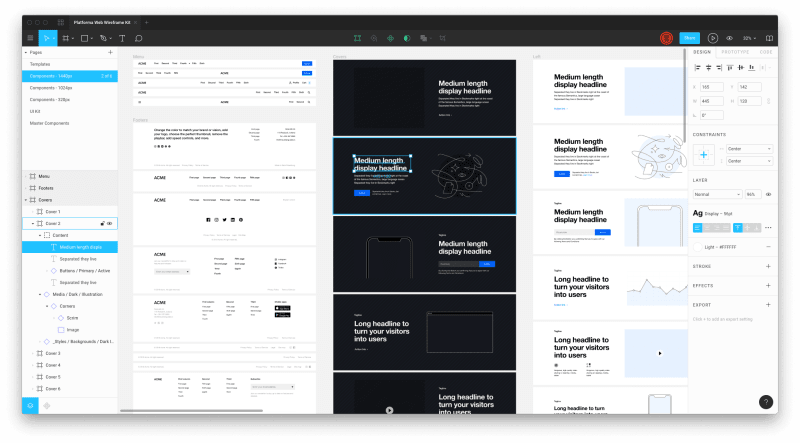🖌️ Behold, Figma's magic - it whipped up this cover in a snap!
In today’s tech landscape, the intersection between user interface (UI) and user experience (UX) design and frontend development is more critical than ever. For frontend developers, having a grasp of UI/UX principles isn’t just an advantage; it’s a game-changer that significantly impacts the quality and effectiveness of the final product.
Bridging the Gap between Design and Development
The conventional chasm between design and development often leads to communication discrepancies. While designers envision visually appealing and functional interfaces, translating that vision into a tangible product encounters hurdles without mutual comprehension between teams.
Frontend developers equipped with robust UI/UX design knowledge help bridge these gaps. They comprehend the rationale behind design decisions, empathize with user needs, and effectively implement solutions that harmonize more closely with the original design intent.
Impact on Efficiency and Product Quality
Collaboration between designers and developers is paramount. However, when frontend developers possess UI/UX design expertise, inter-team communication becomes seamless. This yields several advantages:
1. Enhanced Grasp of Design Concepts
By assimilating UI/UX design principles, developers adeptly interpret and implement design guidelines and prototypes. They not only transmute ideas visually but also contribute technical insights that optimize usability and functionality.
2. Agile Development Process
Proficiency in design enables developers to make well-informed decisions during implementation, reducing the need for frequent revisions. This expedites development cycles and minimizes potential rework.
3. Consistency in the Final Product
Understanding the intricacies of UI/UX design empowers developers to maintain visual and functional consistency within the product. This results in a more coherent user experience, fostering a sense of unity and appeal for end-users.
The Handoff as a Critical Collaboration Point
The handoff process, where designs transition from designers to developers for implementation, often proves critical. Here, a developer’s UI/UX design knowledge plays a pivotal role. They can adeptly comprehend design files, interpret specifications, and make informed decisions during the implementation phase.
The Relevance of Tools like Figma for Frontend Developers
Tools like Figma have become instrumental in facilitating collaboration between designers and developers. Proficiency in platforms like Figma offers frontend developers significant advantages:
1. In-depth Understanding of Designs
Mastery of Figma empowers developers to dissect designs comprehensively. They can deconstruct components, understand interactions, and grasp the logic behind layouts, simplifying the translation of design into functional code.
2. Seamless Team Collaboration
Familiarity with Figma enables frontend developers to engage more actively with the design team, fostering smoother collaboration, discussions about solutions, identification of technical challenges, and optimal implementation strategies.
3. Streamlined Handoff Processes
Adeptness in interpreting design files within Figma streamlines handoff processes. Developers can more intuitively understand visual and structural guidelines, expediting implementation and minimizing potential misunderstandings.
The Fundamental Role of UI in Frontend Development
Within frontend development, the user interface (UI) serves as a cornerstone. For developers, UI is more than a visual layer—it’s a conduit between functionality and user experience. A profound understanding of UI empowers developers to:
- Create responsive, user-centric interfaces tailored to diverse devices and screen sizes.
- Implement design elements effectively, ensuring consistency and accessibility.
- Comprehend interactions among interface elements to deliver an intuitive and delightful user experience
Proficiency in UI/UX design principles, combined with mastery of tools like Figma, emerges as an indispensable asset for frontend developers. This expertise not only fortifies team collaboration but also empowers developers to craft more cohesive, functional, and user-centric digital products. Understanding the paramount importance of UI and UX, developers transcend the realm of coding; they craft immersive experiences that resonate profoundly with end-users.




Top comments (0)